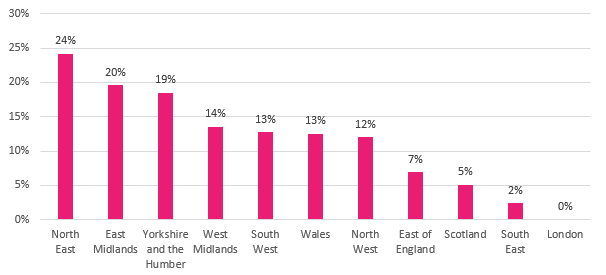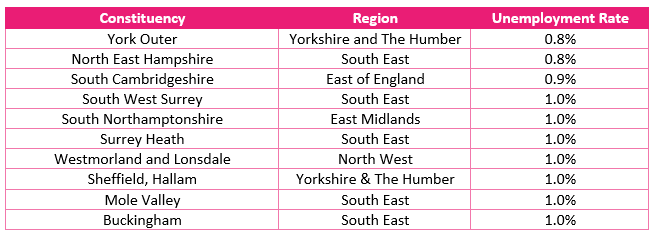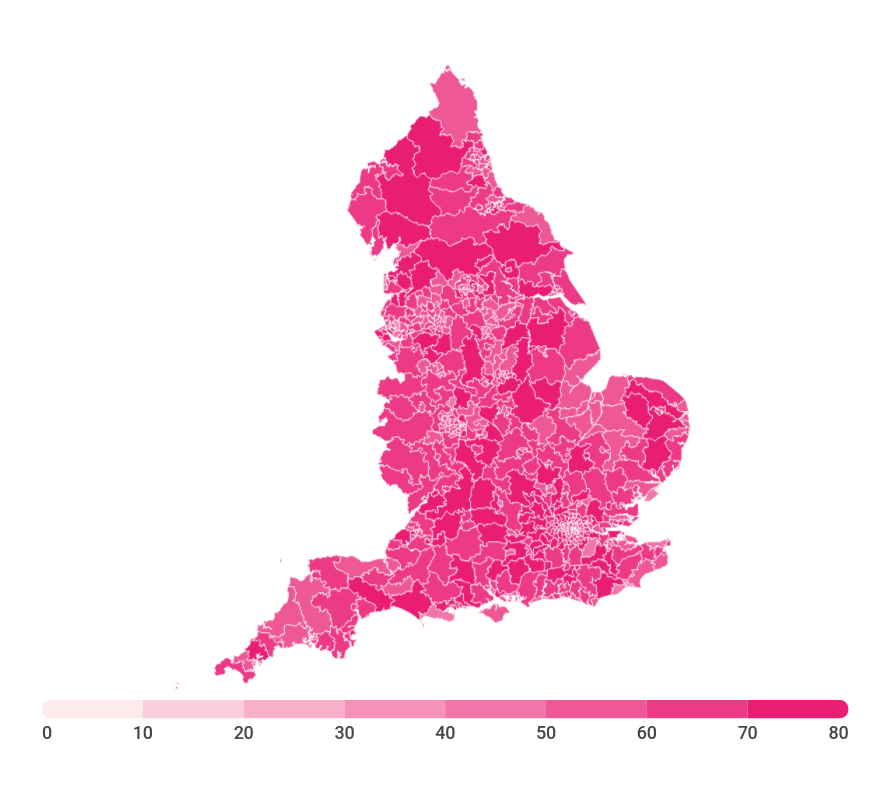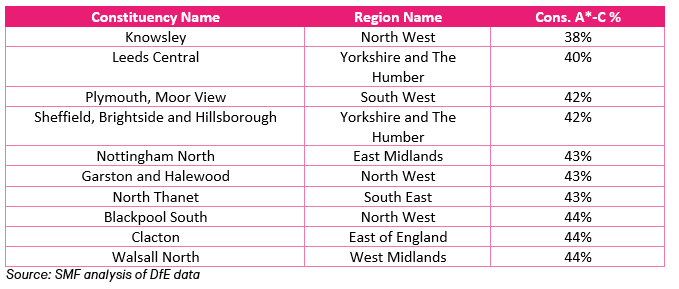The recent election has led many people to divide the country into the north vs. the south. At Westminster there has been much talk about the northern “red wall”, about “levelling up” and even about the number of Greggs in an area as an explanation for voting behaviour.
Economic geography matters to politics and policy so it’s good to see such issues at the forefront of debate. But people desperate to divide the country into north vs. south ignore the nuances in locations and overlook the reality faced by many regardless of latitude. Apolitical narrative that focuses on the north as left behind and the south as rich may lead to a new set of people questioning whether the system works for them. This raises the question of whether it makes sense to divide the country into two and put so much political attention on reducing this gap.
What does inequality look like in the UK?
Income
The level of income inequality in the UK has been hovering around the same level for a while. To say that income levels are high in the south and low in the north would be an oversimplification of the truth. If we divide the country by levels of weekly pay, there is a clear bubble of high pay around London and the home counties, but in the rest of the country it is a much more mixed picture.
Weekly pay decile by constituency (GB)
By splitting weekly pay into deciles of equal size it is clear that certain areas of the country are doing better than others. Almost one quarter (24%) of constituencies in the north east of England are in decile one for weekly pay. That means they are in the lowest 10% of areas by pay. No London constituencies are in decile one.
Percentage of constituency in decile one for weekly wages

When we look at weekly pay, it is clear that life is not as prosperous in the south west as the north vs south rhetoric would have us believe. A larger proportion of constituencies in the south west are in the lowest decile than in the north west.
Unemployment
Unemployment has been on a downward trend for a number of years. However, there are some stark inequalities across the country. There are clusters of high unemployment – around the north west, the north east and coastal communities (across the country).
If we look at the 10 worst and best constituencies for unemployment then the West Midlands stands out as an area with significant unemployment – 6 of the 10 constituencies with the highest rate of unemployment are in the West Midlands.
Ten constituencies with highest unemployment rate

On a regional basis the south-east has the lowest unemployment, five of the ten constituencies with the lowest unemployment are in the south east. London is always discussed as the engine of the UK but the reality is that unemployment in the capital is high.
Ten constituencies with lowest unemployment rate

Educational attainment
Educational attainment and access to higher education or technical education is an important driver of social mobility, economic performance and productivity. All of which are key areas of focus for the government and its aim of “levelling up” the region of the UK.
GCSE attainment by constituency (England only)

There is no clear line dividing the country in two or patterns of clear out-performance.
Top ten constituencies by GCSE attainment (England)

Three of the top ten areas for educational attainment at 16 are in the east of England and three others are in London but the North West and West Midlands and East Midlands all make an appearance in the top 10.
The bottom 10 is again mixed by region. Three of the bottom ten constituencies are in the North West – there are only two regions that fail to appear within the bottom ten and that is the North East and London.
Bottom ten constituencies by GCSE attainment (England)

How should the government “level up”?
The ambition to raise the economic performance of all regions of the economy is welcome – but policy that focuses too much on location rather than underlying economic performance could mean neglecting areas that contain pockets of deprivation.
What is evident from all of the data above is that splitting the country in two does not work, particularly when no one seems certain of where that line would be drawn. The maps above resonate with previous SMF work in this space, showing the poor performance of coastal communities, inequality within regions and the need to tackle persistent low pay in particular areas.
